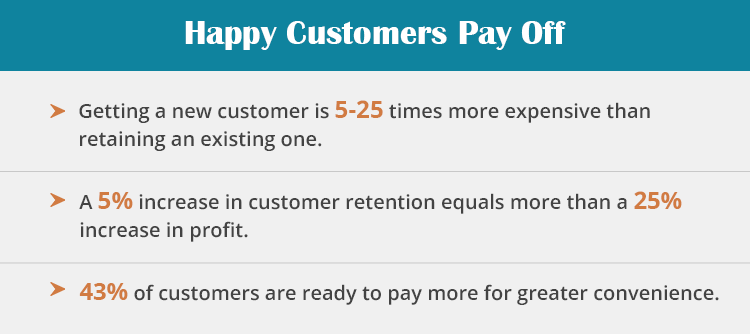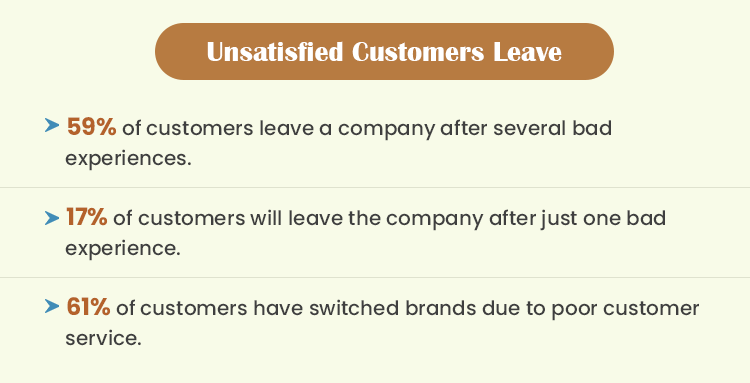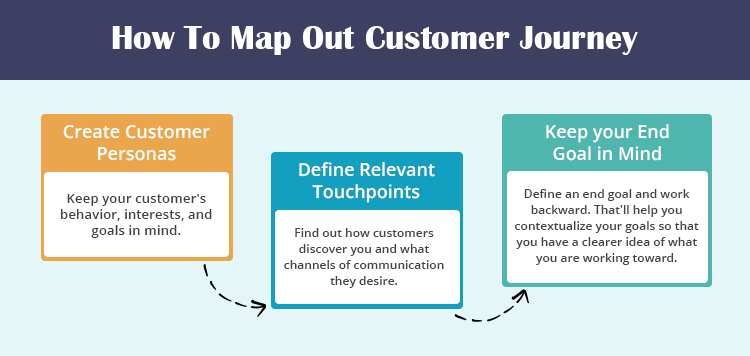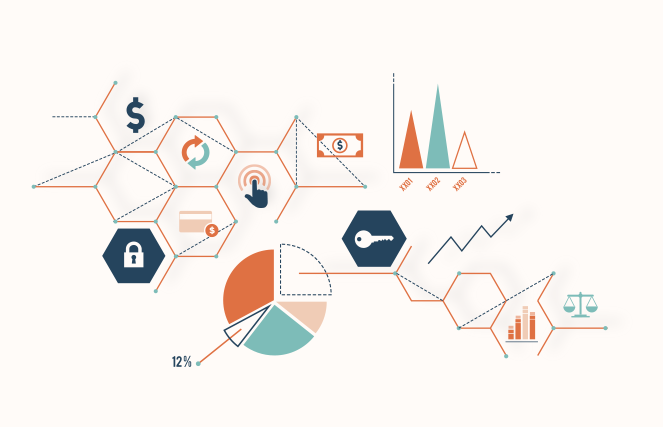I don’t need to tell you that customer satisfaction is important. You already know that. What you may not have known is that high customer satisfaction indicates that the financial expectations will be exceeded. It is often not easy to see the value of customer satisfaction as it is to see the ROI of other investments. However, customer satisfaction is incredibly valuable. Yet, many brands fail to prioritize investing in customer satisfaction.
We’re living in a time where we face the commodity trap. There are so many products and services that customers often find themselves in the pool of sameness. Standing out and being unique thus becomes a necessity for survival. Imagine a company ignoring customer experience in such a scenario. And at the foundation of providing/enhancing customer satisfaction, there exists one thing: data analytics.
Evaluating data allows brands to analyze if they did the right thing. It enables them to focus further on improving their processes. Without helpdesk analytics, customer support teams can only hope for the best to happen. Data analytics takes the guesswork out of the equation. It helps you track customer behavior, record the customer support team’s interaction, and question the consumer dissatisfaction rationale.

Happy Customers Pay Off

Unsatisfied Customers Leave
Businesses cannot afford avoidable perils. They must integrate helpdesk analytics into their customer interaction strategy to optimize customer satisfaction rates. Irrespective of the size and market segment, customer satisfaction is a common goal every enterprise strives to accomplish. In this article, we will talk about how data drives customer satisfaction and brings the best results for your businesses.
How To Improve Customer Satisfaction With Data Analytics
Drill into the treasure trove of data and find out the root cause of the problems in your support workflow with the following best practices. The majority of business problems can be solved by using simple analytics methodologies like:
- Aggregate analysis
- Correlation analysis
- Trend analysis
- Sizing and estimation
If your teams can learn to master these four techniques, you can solve most of the business problems that you encounter in your day-to-day workflow. Besides this, you need an advanced helpdesk where your data silos are consolidated within the system. Here’s how you can go about it:
1. Clear Out Data Silos
If your stored data is only accessible to one group of the organization instead of everyone, it might cause frequent data-related roadblocks. Such a situation leads to lower productivity and greater inefficiencies. It can lead to disparate data collection and analysis. The cause for this problem can be a lack of integration and insufficient tech to consolidate your data and merge it with your analytic goals.
There’s only one solution to this problem. Get your team a consolidated helpdesk system. Your support executives already have a lot to deal with. You can save them from excessive switching between the tools by implementing integrations. This will save you from the low-integrity analysis and will make sure that team members across the company receive consistent and reliable data. Some benefits of integration include:
- It helps you paint a complete picture of the customer journey
- It gives a 360-degree view of how people engage with their brands
- Prevents executives from taking decisions based on one-sided data
- It places the focus on making a decision based on more behavioral data than anecdotal data.
2. Empower Your Team’s Analytics Aptitude
Not everybody has a natural leaning towards data and analytics. You need to train your employees and empower them to be able to make data-driven decisions like decisions based on customer history, purchase journey, purchase frequency, etc. Good training will mean that you support flows in the direction of delivering actionable insights from the most important metrics.
3. Map the Customer Journey
In order to fix your processes, you need to know where your team’s lacking. You need to know what part of the journey you lose your customers at. Or, more importantly, where consumers are experiencing friction and frustration with your brand.
In order to answer these questions, you must consider creating a customer journey map. This way, you’ll get a comprehensive understanding of the path customers take to find you and what channels they prefer. This will help you uncover the customer behavioral data across every customer touchpoint to determine where your team has room for improvement.
Each and every touchpoint for the customer journey gives you an opportunity within your CX strategy to bring customer satisfaction. It also includes going through your customers’ initial interaction with your company, their preferred social media channels, and interactions with your support teams. But, how to do it, you’d ask. Here’s how:

How To Map Out Customer Journey
4. Customer Surveys
Customer surveys can help you find valuable insights about your business. Data from customer satisfaction surveys provide candid customer feedback on how your services are faring in the marketplace. It reveals the problem areas that result in negative reviews or a damaged reputation. It also keeps you updated on the brand backlash online and offline (if any.)
However, the data you collect from surveys must be actionable and should allow you to take some action instantly. Picking the right survey type is important, though. Here are some surveys to choose from:
- Customer satisfaction survey
- Market research survey
- Brand awareness survey
- Event evaluation survey
- Interaction evaluation survey
- Net promoter score
- Segmentation survey
5. Omnichannel Muscle is Always a Plus
Omnichannel customer support provides a seamless, consistent experience across all modes of communication, including email, phone, chat, and social media. Consistently better experiences will drive customer satisfaction and loyalty. Your omnichannel muscle must also include self-service options. Self-service tools provide a starting point for common customer problems and can offer trackable insights.
Make sure your omnichannel mechanism allows you to convert customer queries from every channel into helpdesk tickets automatically. You can ask your customers what channels they would prefer to use to reach out to you through a survey. Based on this, you can manage your resources.
6. Advanced Analytics For a Proactive Approach
As we discussed at the beginning of the article, being unique will make you recognizable. It’ll help you go beyond the basics of customer support. This includes analyzing everything from customer information, order history, requests at hand, purchase frequency, purchase journey, support journey, etc.
Customer analytic reports can help you track team performance, identify bottlenecks before the processes break, and measure CSAT on an ongoing basis. This data can help you drive higher efficiencies, understand customer behaviors, understand their needs, and fasten the resolution process.
Build Superior Customer Satisfaction With DeskXpand
DeskXpand is the best answer when you want to gauge how satisfied your customers are with the process of receiving your services. DeskXpand analytics allow you to measure the fulfillment rates, delivery times, and everything that goes in between. DeskXpand enables you to dig into the numbers so that you can clearly assess the information at hand and then implement strategies to increase satisfaction. It’ll help you answer important questions like:
- How fast are the orders being fulfilled?
- Is the resolution happening on time? If not, why?
- How likely are consumers to purchase from you again?
DeskXpand’s intuitive analytical capabilities allow users to assess information that leads to greater customer satisfaction. DeskXpand lets you:
- Drill down important data quickly
- Assess fulfillment rates and delivery times
- Gauge customer appreciation and satisfaction
- Analyze trends to improve forecasting
- Evaluate cross-functional stats
Your brand’s customer support efforts require an advanced helpdesk analytics solution to maximize the outcomes. DeskXpand provides your business with a comprehensive solution to outpace competitors. Take a demo and find out!









